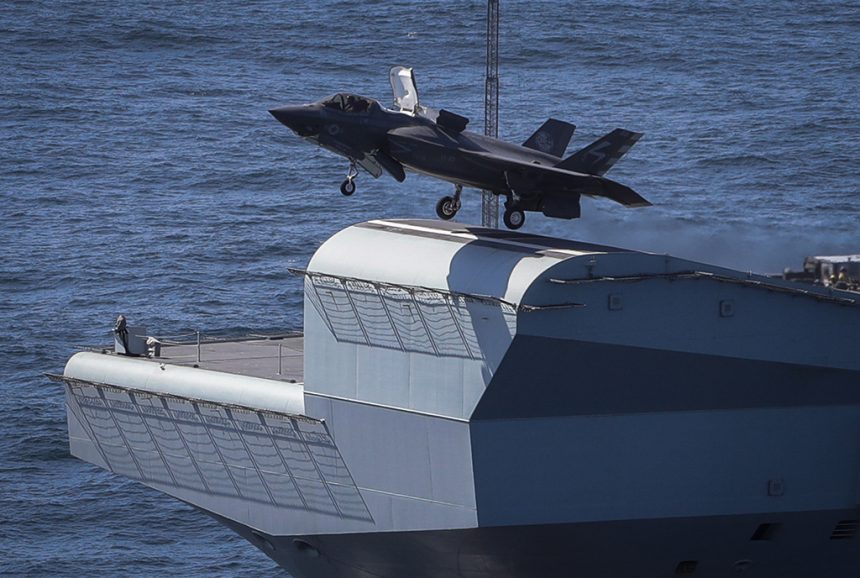Royal Navy Commander Nathan Gray and RAF Squadron Leader Andy Edgell were the first pilots to land their F-35 Lightning stealth jets on the flight deck of HMS Queen Elizabeth.
In the last 24 hours we have commented two quite different F-35B Lightning II-related news: the first air strike in Afghanistan and the first crash in South Carolina. Both events involved U.S. Marine Corps STOVL (Short Take Off Vertical Landing) variant aircraft. However, these were not the only newsworthy events: on Tuesday Sept. 25, 2018, Royal Navy Cmdr. Nathan Gray and Royal Air Force Sq. Ldr. Andy Edgell, both test pilots at the F-35 Integrated Test Force at NAS Patuxent River, Md., were the first pilots to land the stealth F-35B on board HMS Queen Elizabeth.
F-35B related news of the last 24 hours:
1) First air strike in Afghanistan (USMC)
2) First crash in South Carolina (USMC)
3) First landing on UK aircraft carrier (RN/RAF/ITF) https://t.co/CC6qCG67oP
— David Cenciotti (@cencio4) September 28, 2018
The first landings and subsequent take-offs from HMS Queen Elizabeth “are the culmination of a British endeavor lasting more than a decade to bring an aircraft carrier back to the UK’s arsenal,” says an official U.S. DoD release.
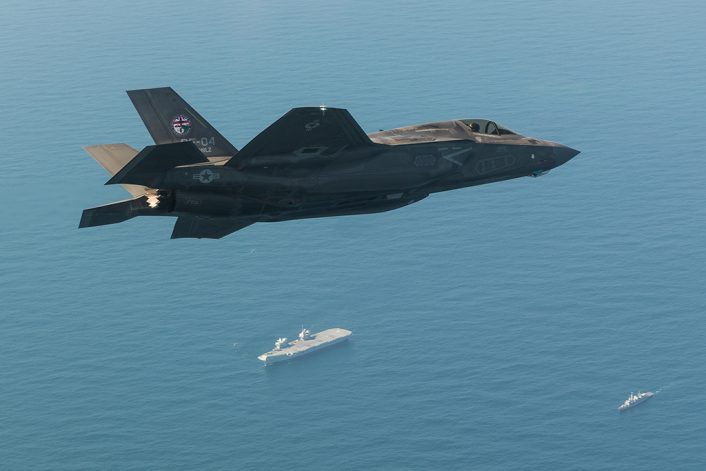
Royal Navy Cmdr. Nathan Gray made history by being the first to land on, followed by Royal Air Force Sq. Ldr. Andy Edgell, both test pilots at the Integrated Test Force (ITF) based at Naval Air Station Patuxent River, Maryland.
Photo courtesy of Lockheed Martin
The landings on Britain’s newest aircraft carrier (able to accommodate up to 24 F-35Bs out of the planned 138 F-35 Lightning jets) kicked off the first of two First of Class Flight Trials (Fixed Wing) phases, held back-to-back this fall, where the ITF team plans to perform a variety of flight maneuvers and deck operations to develop the F-35B operating envelope for QEC carriers. According to the ITF, the tests “will evaluate jet performance on over 200 test points during different weather and sea conditions as well as the aircraft’s integration with the ship. A third FOCFT (FW) phase followed by operational testing is scheduled for 2019.”
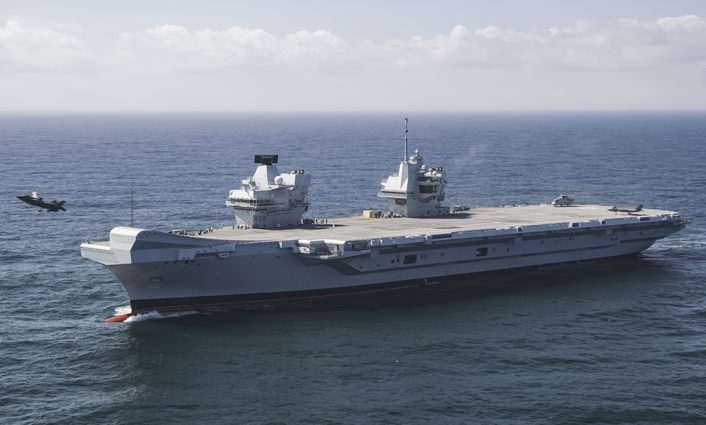
Courtesy photo by Royal Navy
The first landings were performed as HMS Queen Elizabeth operated off the U.S. East Coast. The aircraft carrier left Portsmouth in August, crossing the Atlantic to conduct the flying trials and joint training with the US Navy. The flight trials are scheduled to take around 11 weeks and +500 take-off and landings. The target is to be ready for a deployment from 2021.
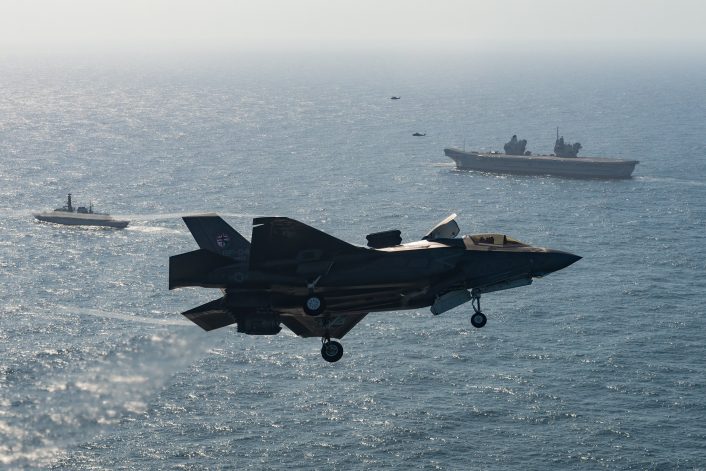
In an official Royal Navy release, the Commanding Officer of HMS Queen Elizabeth, Captain Jerry Kyd, said: “I am quite emotional to be here in HMS Queen Elizabeth seeing the return of fixed-wing aviation, having been the captain of the aircraft carrier which launched the last Harrier at sea nearly eight years ago.
“The regeneration of big deck carriers able to operate globally, as we are proving here on this deployment, is a major step forward for the United Kingdom’s defence and our ability to match the increasing pace of our adversaries. The first touch-downs of these impressive stealth jets shows how the United Kingdom will continue to be world leaders at sea for generations to come.”
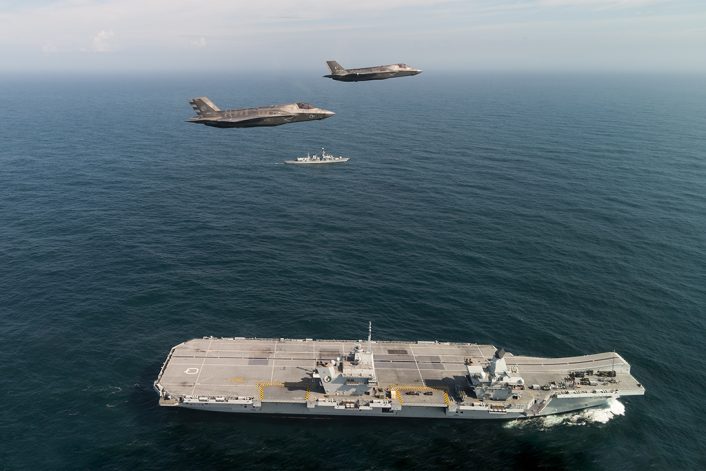
Royal Navy Cmdr. Nathan Gray made history by being the first to land on, followed by Royal Air Force Sq. Ldr. Andy Edgell, both test pilots at the Integrated Test Force (ITF) based at Naval Air Station Patuxent River, Maryland.
Photo courtesy of Lockheed Martin
Commodore Andrew Betton, the commander of the UK’s Carrier Strike Group, said: “The Queen Elizabeth-class carriers have been specifically designed and built to operate the F-35, offering an immensely flexible and potent combination to deliver military effect around the world.
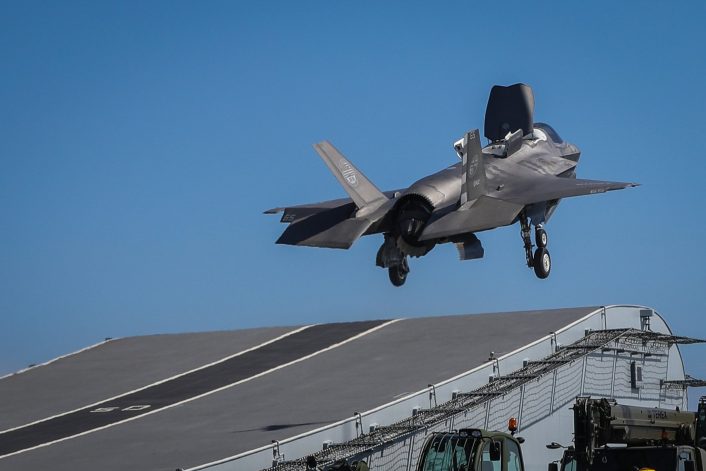
“Conducting these trials is a critical and exciting step on this journey and I applaud the many thousands of civilian and military personnel who have played a part in bringing the strategic ambition to reality.”
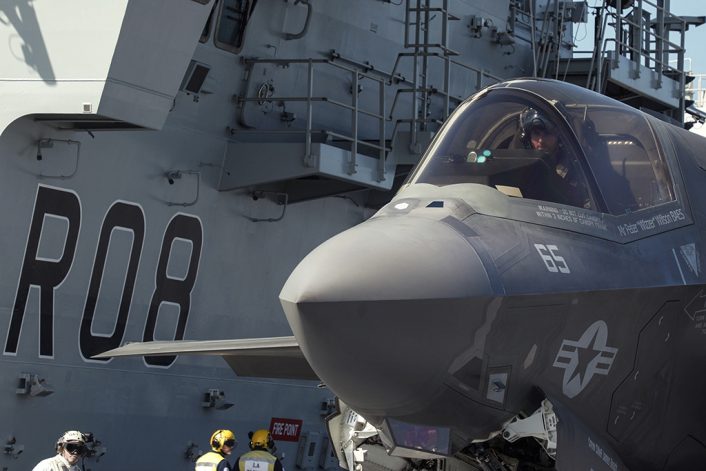
Courtesy photo by Royal Navy

